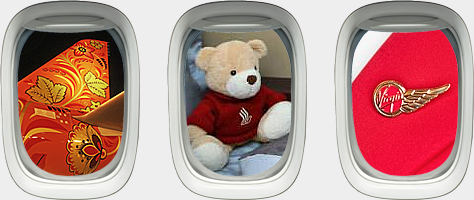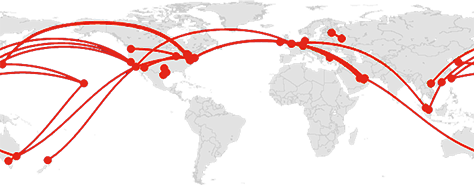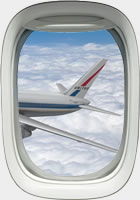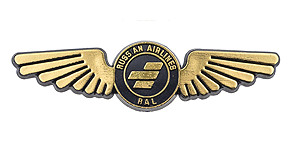Introduction
On the first Monday in March, 1961, the unthinkable struck Eastern Air Lines: a deficit. After 26 years of profits, Eastern declared a loss of $3.6 million.
The loss in 1960 marked the beginning of a decade of change at Eastern. It revealed fundamental problems from which the airline would never really recover. But it also spurred one of the most remarkable reinventions of any airline brand, ever. The changes at Eastern went far beyond a new coat of paint on its airplanes. They reflected an airline that not only portrayed itself differently, but saw itself differently.
For in just ten years, Eastern went from “bums on seats” to “the Wings of Man.”
Read more
June 1st, 2014 \ Posted in Advertising, Features, Jingles, Liveries \ 9 Comments »
In the 1960s, Aeroflot had something of a public relations problem. Although it was then the world’s largest airline — and a vital link for its vast motherland — its reputation for Soviet austerity was well-earned. On domestic routes, passengers endured indifferent service, chronically oversold flights, and uncomfortable aircraft. The situation was so dire that a 1960 column in Komsomolskaya Pravda, the official newspaper of the youth wing of the Communist Party, openly criticized the state-owned airline: “Unfortunately no genuine concern for passengers is felt in Aeroflot.”
So Aeroflot did something distinctly un-Soviet: it turned increasingly to Western marketing techniques. Techniques that included a jingle sung by none other than Eduard Khil, Mr. Trololo himself. Read more
November 22nd, 2013 \ Posted in Features, Jingles \ No Comments »

Welcome to the ninth issue of The Work This Week, a weekly roundup of new advertising, identity, and brand experience work from around the airline industry. This week, Aeroflot celebrates its 90th anniversary, Singapore Airlines reveals a new cabin, and KLM redesigns its logo using the last font you’d expect.
Read more
July 14th, 2013 \ Posted in Flyby Wire \ No Comments »

There’s one facet of airline branding that’s subtle, yet intensely symbolic. And best of all, it doesn’t cost a thing. It’s the flight number.
In the age of rail, railroads often reserved lower numbers for their most prestigious trains. By the jet age, Pan Am used “flight 1″ for its fabled round-the-world service (flight 2 flew the same route, but in the opposite direction.) The flight an airline designates as “flight 1″ has powerful meaning. It may reflect the airline’s history (as in the cases of Southwest, JetBlue, and American.) Or it might reflect present priorities (as for Air Canada.) Sometimes flight 1 can give you a deep insight into an airline’s soul. And sometimes not.
Read more
June 9th, 2013 \ Posted in History \ No Comments »
 News leaked this week that United Airlines is polling its current and former employees on which classic livery to feature on a 757 next year. The livery will celebrate the airline’s 85th anniversary. Thanks to @GordonWerner, you can see the five options here. I don’t want to unduly influence the voting, but the Mainliner colours sure look sharp…
News leaked this week that United Airlines is polling its current and former employees on which classic livery to feature on a 757 next year. The livery will celebrate the airline’s 85th anniversary. Thanks to @GordonWerner, you can see the five options here. I don’t want to unduly influence the voting, but the Mainliner colours sure look sharp…
When United’s “retrojet” takes to the skies, it will join dozens of other airplanes painted in the bygone colours of dozens of different airlines. It seems almost every airline has a retrojet these days. The trend started ten years ago, and is only gaining momentum. Read more
November 22nd, 2010 \ Posted in Liveries \ No Comments »




